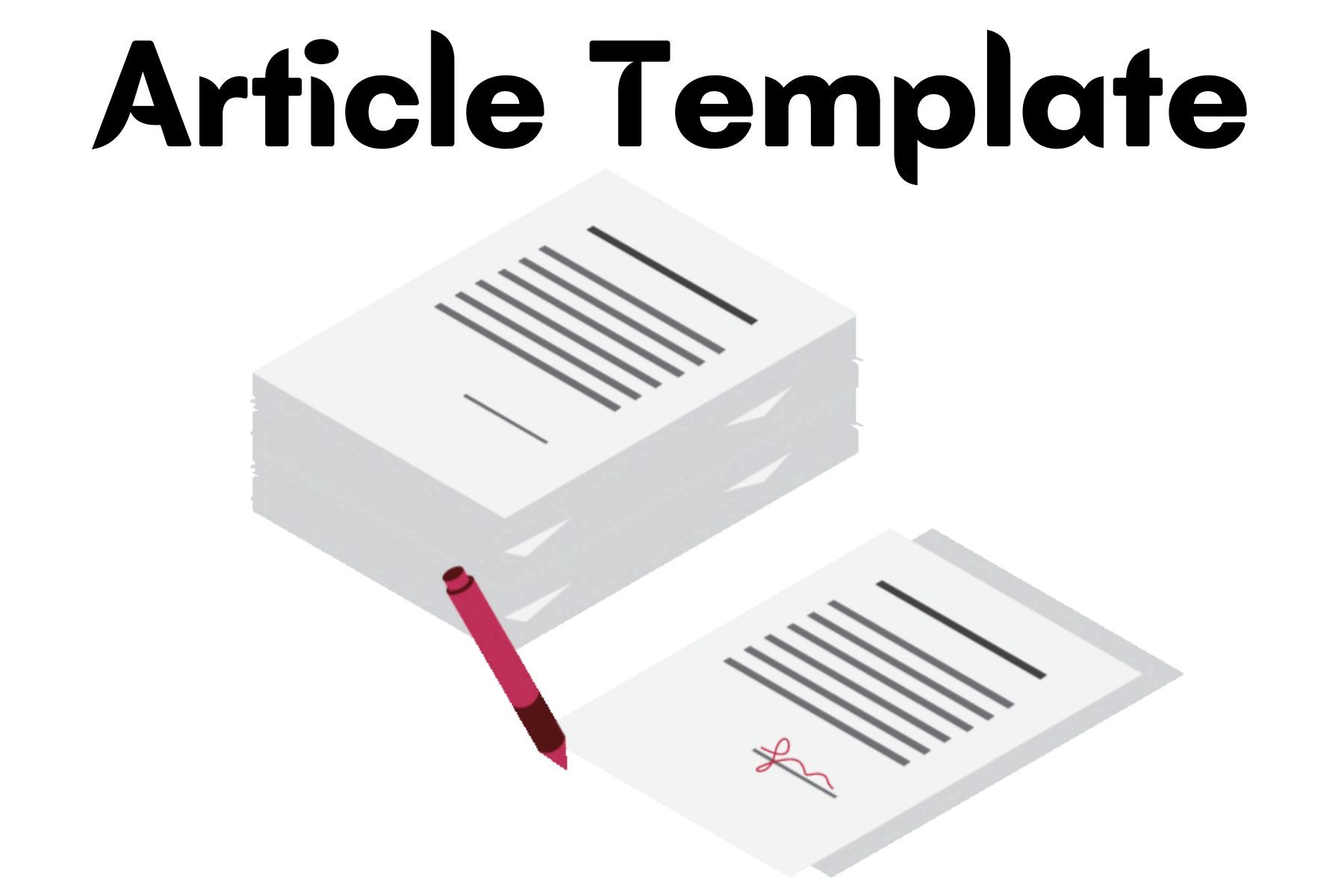Newman Error Analysis (NEA): Identifying Students' Functional Thinking Errors Based on Self-Efficacy
DOI:
https://doi.org/10.18326/hipotenusa.v7i1.2092Keywords:
NEA, Functional Thinking, Self-efficacy, Problem-SolvingAbstract
This study aims to analyze the relationship between self-efficacy and high school students' errors in functional thinking using Newman Error Analysis (NEA). This study uses a qualitative approach with a descriptive method to analyze the pattern of students' functional thinking errors in solving mathematical problems. The subjects of the study were selected by purposive sampling based on variations in students' self-efficacy levels (high, medium, and low) to obtain a more comprehensive representation in the analysis of functional thinking errors. Students' self-efficacy was measured using a Likert scale-based questionnaire, while essay-based tests were used to identify their mathematical functional thinking abilities. Additional data were obtained through interviews based on interview guidelines to understand students' functional thinking processes in solving problems. The validity of the research data was achieved using the triangulation method by comparing test result data, questionnaires and interview guidelines. The results showed that students with high and medium self-efficacy tended to make fewer functional thinking errors than students with low self-efficacy. Students with low self-efficacy made more errors in understanding problems (comprehension errors), transforming information (transformation errors), applying procedures (process skill errors), and writing final answers (encoding errors). These findings can be a basis for teachers in designing more effective learning strategies to improve understanding of the concept of function.
References
Allday, R. A. (2018). Functional Thinking for Managing Challenging Behavior. Intervention in School and Clinic, 53(4), 245–251. https://doi.org/10.1177/1053451217712972
Al Farra, N.K., Al Owais, N.S., Belbase, S. (2022). Computational, Logical, Argumentative, and Representational Thinking in the United Arab Emirates Schools: Fifth Grade Students’ Skills in Mathematical Problem Solving. Mathematics Teaching Research Journal.14(1), 215-252. https://eric.ed.gov/?id=EJ1361644
Amalia, S. R. (2017). Analisis Kesalahan Berdasarkan Prosedur Newman dalam Menyelesaikan Soal Cerita ditinjau dari Gaya Kognitif Mahasiswa (Error Analysis Based on the Newman Procedure in Solving Story Problems in Terms of Student Cognitive Style). Aksioma. 8(1), 17–30. https://doi.org/10.26877/aks.v8i1.1505
Arumiseh, N. E., Hartoyo, A., & Bistari, B. (2019). Analisis Kesalahan Siswa Menyelesaikan Soal Cerita Aritmatika Sosial Berdasarkan Newman’s Error Analysis di SMP (Analysis of Student Errors Solving Social Arithmetic Story Problems Based on Newman's Error Analysis in Middle School). Jurnal Pendidikan dan Pembelajaran Khatulistiwa (JPPK) (Equatorial Journal of Education and Learning), 8(9), 1–9.
https://jurnal.untan.ac.id/index.php/jpdpb/article/view/36086
Blanton, M., Brizuela, B. M., Gardiner, A. M., Sawrey, K., Newman-owens, A., Blanton, M., Gardiner, A. M., & Newman-owens, A. (2016). A Learning Trajectory in 6-Year-Olds’ Thinking about Generalizing Functional Relationships. Journal for Research in Mathematics Education. 46(5), 511–558. https://doi.org/10.5951/jresematheduc.46.5.051
Blanton, M., Stephens, A., Knuth, E., Gardiner, A. M., Isler, I., Kim, J., Blanton, M., Knuth, E., Gardiner, A. M., & Kim, J. (2015). The Development of Children’s Algebraic Thinking : The Impact of a Comprehensive Early Algebra Intervention in Third Grade. Journal for Research in Mathematics Education. 46(1), 39-87. https://doi.org/10.5951/jresematheduc.46.1.0039
Chiphambo, S. M., & Mtsi, N. (2021). Exploring Grade 8 Students’ Errors When Learning About the Surface Area of Prisms. Eurasia Journal of Mathematics, Science and Technology Education, 17(8). https://doi.org/10.29333/ejmste.10994
Creswell, 2012. Educational Research Fourth Edition. Pustaka Pelajar. ISBN 978-602-229-474-0
Döş, İ. (2023). Relationship between Happy School, General Self Efficacy, Academic Self-Efficacy and Life Satisfaction. European Journal of Educational Management. 6(1), 31–43. https://doi.org/10.12973/eujem.6.1.31
Fatahillah, A., Wati N.T., Y. F., & Susanto. (2017). Analisis Kesalahan Siswa dalam Menyelesaikan Soal Cerita Matematika Berdasarkan Tahapan Newman Beserta Bentuk Scaffolding yang diberikan (Analysis of Student Errors in Solving Mathematics Story Problems Based on Newman's Stages and the Scaffolding Forms Given). Procediamath, 8(1), 40–51.
https://doi.org/10.19184/kdma.v8i1.5229
Haryati, Tuti, Amin, S., & Junaedi, I. (2016). Analisis Kesalahan Siswa SMP Kelas VII dalam Menyelesaikan Soal Cerita Pemecahan Masalah Berdasarkan Prosedur Newman (Analysis of Class VII Middle School Students' Mistakes in Solving Problem Solving Story Problems Based on the Newman Procedure). Unnes Journal of Mathematics Education. 5(1). 8-15. https://doi.org/10.15294/ujme.v5i1.9341
Hidayah, S. (2016). Analisis Kesalahan Siswa dalam Menyelesaikan Soal Cerita SPLDV Berdasarkan Langkah Penyelesaian Polya (Analysis of Student Mistakes in Solving SPLDV Story Problems Based on Polya Completion Steps). Prosiding Seminar Nasional Pendidikan Matematika, Universitas Kanjuruan Malang. 1. 182-190
Hendriana, Heris, E., & Sumarmo, U. (2021). Hard Skills dan Soft Skills Matematik Siswa. Bandung: PT Refika Aditama.
Jami, M. P., Murniasih, T. R., & Yuwono, T. (2020). Analisis Kesalahan Peserta Didik Dalam Menyelesaikan Soal Cerita Aritmatika Sosial Berdasarkan Tahapan Newman (Analysis of Student Errors in Solving Social Arithmetic Story Problems Based on Newman's Stages). Mathematics Education Journal, 3(1), 1–9. https://doi.org/10.21067/pmej.v3i1.3492
Kamarulzaman, M. H., Kamarudin, M. F., Sharif, M. S. A. M., Esrati, M. Z., Esrati, M. Z., & Yusof, R. (2022). Impact of Differentiated Instruction on the Mathematical Thinking Processes of Gifted and Talented Students. Journal of Education and E-Learning Research. 9(4), 269–277. https://doi.org/10.20448/jeelr.v9i4.4253
Kurniati, U., Setiyani, S., & Sagita, L. (2021). Error Analysis Using Newman Procedures and the Mathematical Representation Ability of Pre Service English Teachers. Anatolian Journal of Education. 6(2), 135–156. https://doi.org/10.29333/aje.2021.6211a
Lestari, K., & Yudhanegara, M. (2018). Penelitian Pendidikan Matematika. Bandung: PT Refika Aditama.
Mahmudah, W. (2018). Analysis of Student Errors in Solving Hots Type Math Problems Based on Newman’s Theory. Jurnal UJMC, 4(1), 49–56.https://doi.org/10.52166/ujmc.v4i1.845
Murtiyasa, B., & Wulandari, V. (2020). Analisis Kesalahan Siswa Materi Bilangan Pecahan Berdasarkan Teori Newman (Analysis of Student Errors on Fractional Numbers Based on Newman's Theory). AKSIOMA. 9(3), 713. https://doi.org/10.24127/ajpm.v9i3.2795
Ningsih, W., Euis E., & Rippi M. (2021). Analisis Kesalahan Siswa dalam Mengerjakan Soal Aritmatika Sosial Berdasarkan Tahapan Newman. JPMI (Jurnal Pembelajaran Matematika Infovatif) 4(1), 177-184. https://doi.org/10.22460/jpmi.v4i1.p%25p
Novferma, N. (2016). Analisis Kesulitan dan Self-Efficacy Siswa SMP dalam Pemecahan Masalah Matematika Berbentuk Soal Cerita (Analysis of Middle School Students' Difficulty and Self-Efficacy in Solving Mathematical Problems in the Form of Story Problems). Jurnal Riset Pendidikan Matematika (Journal of Mathematics Education Research). 3(1).
https://doi.org/10.21831/jrpm.v3i1.10403
Nur Guffron, M & Risnawita, R., (2016). Teori-teori Psikologi. Ar-ruzz Media: Yogyakarta
Paladang, K. K., Indriani, S., & Dirgantoro, K. P. S. (2018). Analyzing Students’ Errors in Solving Mathematics Problems in Function Topics Based on Newman’S Procedures in Grade 8 At Slh Medan. JOHME: Journal of Holistic Mathematics Education, 1(2), 93.
https://doi.org/10.19166/johme.v1i2.798
Prayi̇tno, A. T., Nusantara, T., Hi̇dayanto, E., & Rahardjo, S. (2022). Identification of Graph Thinking in Solving Mathematical Problems Naturally. Participatory Educational Research, 9(2), 118-135. https://doi.org/10.17275/per.22.32.9.2
Rahmat, Pupu S,. (2018). Psikologi Pendidikan. Jakarta: Bumi Aksara
Stephens, A. C., Fonger, N., Strachota, S., Isler, I., Blanton, M., Knuth, E., & Murphy Gardiner, A. (2017). A Learning Progression for Elementary Students’ Functional Thinking. Mathematical Thinking and Learning, 19(3), 143–166. https://doi.org/10.1080/10986065.2017.1328636
Sughesti, Marta Mila, Muhsetyo, G,. & Susanto, H. (2016). Jenis Kesalahan Siswa dalam Menyelesaikan Soal Cerita Berdasarkan Prosedur Newman (Types of Student Errors in Solving Story Problems Based on the Newman Procedure). Seminar Nasional Matematika dan Pembelajarannya (National seminar on Mathematics and its Learning).
Suharnan. (2005). Psikologi Kognitif. Surabaya: Srikandi
Suryowati, E. (2021). Proses Berpikir Fungsional Siswa SMP dalam Menyelesaikan Soal Matematika (Functional Thinking Process of Middle School Students in Solving Mathematics Problems). AKSIOMA. 12(1), 109–119. https://doi.org/10.26877/aks.v12i1.7082
Tanişli, D. (2011). Functional Thinking Ways in Relation to Linear Function Tables of Elementary School Students. Journal of Mathematical Behavior, 30(3), 206–223.
https://doi.org/10.1016/j.jmathb.2011.08.001
Tekaeni, I., Supandi, S., & Setyawati, R. D. (2020). Deskripsi Newman’s Error Analysis dalam Menyelesaikan Soal Cerita pada Peserta Didik Kelas VIII di SMP Institut Indonesia Semarang Tahun Pelajaran 2019/2020 (Description of Newman's Error Analysis in Solving Story Problems for Class VIII Students at the Indonesian Institute of Semarang Middle School in the 2019/2020 Academic Year). Imajiner. 2(1), 1–11. https://doi.org/10.26877/imajiner.v2i1.5758
Warren, E., & Cooper, T. (2005). Introducing Functional Thinking in Year 2: A Case Study of Early Algebra Teaching. Contemporary Issues in Early Childhood, 6(2), 150–162.
https://doi.org/10.2304/ciec.2005.6.2.5
Warren, E., Miller, J., & Cooper, T. J. (2013). Exploring Young Students Functional Thinking. Proceeding of the 35th Conference of the International Group for the Psychology of Mathematics Education. 4. 75–84
Wilkie, K. J. (2014). Learning to Like Algebra Through Looking. Developing Upper Primary Students' Functional Thinking with Visualisations of Growing Patterns. APMC. 19(4). https://eric.ed.gov/?id=EJ1093277
Wilkie, K. J. (2015). Learning to Teach Upper Primary School Algebra : Changes to Teachers’ Mathematical Knowledge for Teaching Functional Thinking. Mathematics Education Research Journal. 28 (2). 245-275. https://doi.org/10.1007/s13394-015-0151-1
Wilkie, K. J., & Clarke, D. M. (2015). Developing Students’ Functional Thinking in Algebra Through Different Visualisations of a Growing Pattern’s Structure. Mathematics Education Research Journal, 223–243. https://doi.org/10.1007/s13394-015-0146-y
Yoannita, B., Budi, E., & Rustana, C. E. (2016). Pengaruh Self Efficacy Terhadap Hasil Belajar Fisika Melalui Penggunaan Model Problem Based Learning (The Influence of Self-Efficacy on Physics Learning Outcomes Through the Use of the Problem Based Learning Model). Proseding Seminar Nasional Fisika (E-Journal). 5. https://doi.org/10.21009/0305010302
Yoni, S. (2017). Pengukuran Self-efficacy Siswa dalam Pembelajaran Matematika di MTsN 2 Ciamis (Measuring Student Self-efficacy in Learning Mathematics at MTsN 2 Ciamis). Jurnal Teori dan Riset Matematika (TEOREMA) (Journal of Mathematical Theory and Research (TEOREMA)). 1(2), 39–44. http://dx.doi.org/10.25157/teorema.v1i2.548
Yuniati, S., & Suparjono. 2021. Mengeksplorasi Kemampuan Siswa dalam Berpikir Fungsional melalui Soal Cerita (Exploring Students' Ability to Think Functionally through Story Problems). Jurnal Cendekia: Jurnal Pendidikan Matematika (Cendekia Journal: Journal of Mathematics Education). 05(1). 139-147. https://doi.org/10.31004/cendekia.v5i1.475
Yuniati, S., Nusantara, T., Sulandra, I. M, & Suparjono (2022). Investigating Functional Thinking Processes that Impact on Function Composition Problems in Indonesia. Acta Scientiae. 24(5), 84–118.Sep/Oct. https://doi.org/10.17648/acta.scientiae.6969
Yuniati, S., Nusantara, T., Subanji, & Sulandra, I. M. (2020). Generalisation of Relations between Quantity Variations through Arithmetic Sequences in Functional Thinking. International Journal of Innovation, Creativity and Change, 13(2), 580–593. https://www.ijicc.net/index.php/volume-13-2020/182-vol-13-iss-2
Yuniati, S., Nusantara, T., & Sulandra, I. M. (2019). The Use of Multiple Representation in Functional Thinking. International Journal of Recent Technology and Engineering. 8 (1C2). https://www.ijrte.org/wp-content/uploads/papers/v8i1C2/A11120581C219.pdf.
Downloads
Published
How to Cite
Issue
Section
License
Copyright (c) 2025 Suci Yuniati, Rizky Aulia Nisa, Annisah Kurniati, Depriwana Rahmi; Evrim Erbilgin

This work is licensed under a Creative Commons Attribution-NonCommercial-ShareAlike 4.0 International License.

This work is licensed under a Creative Commons Attribution-ShareAlike 4.0 International License.


